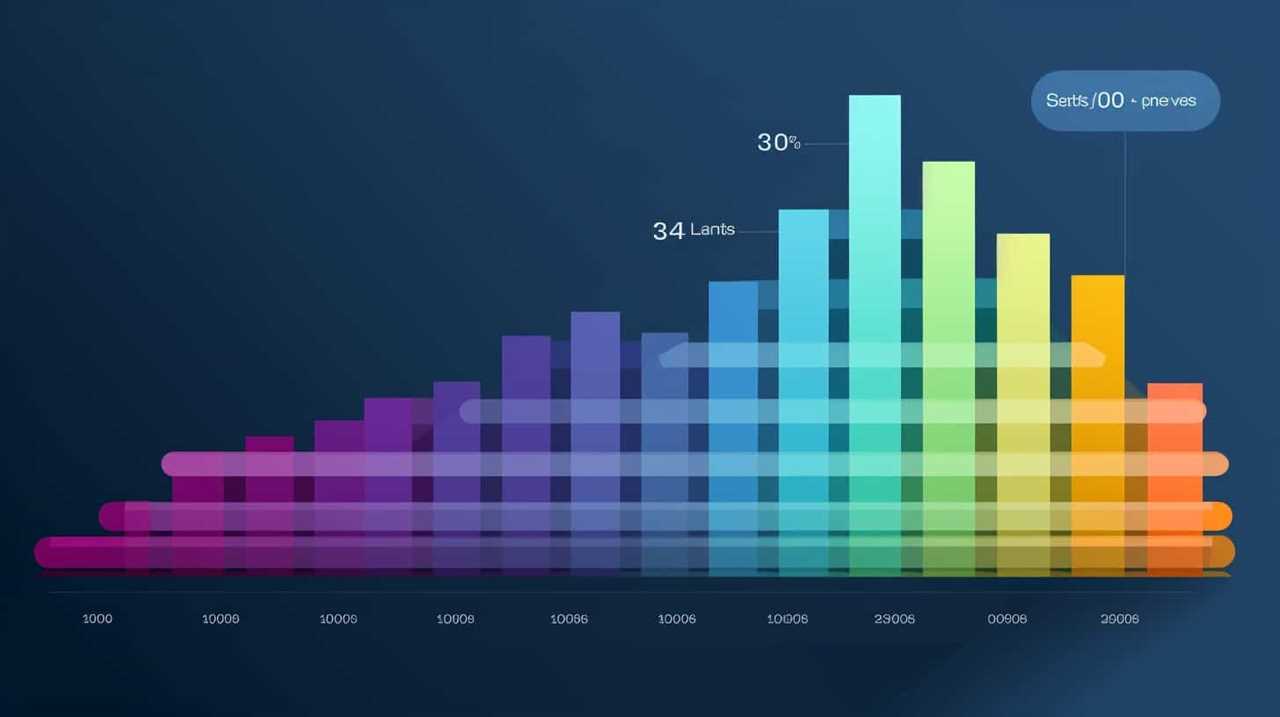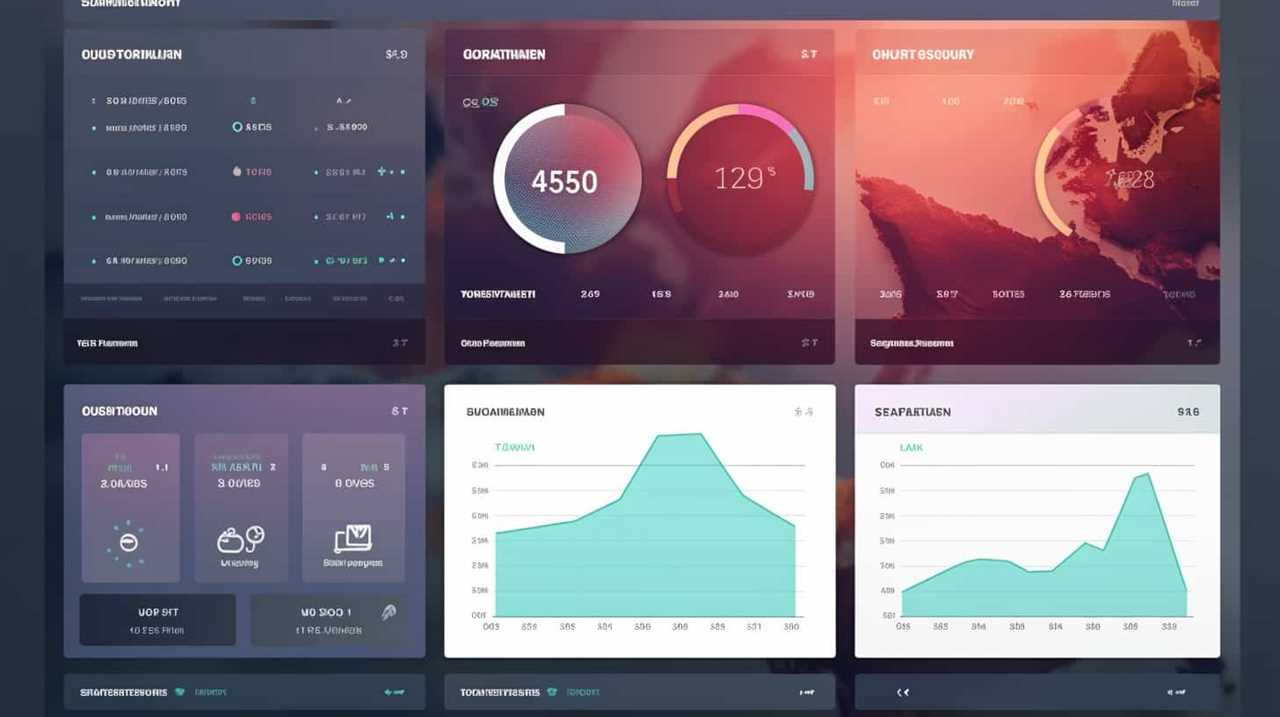Holistic SEO
What Is Seo in Technical Terms

Feeling exhausted by the notion that SEO seems like an alien language? Hold tight, as we’re on the cusp of making it crystal clear for you.
In this article, we’ll break down what SEO is in technical terms and why it’s crucial for businesses.
We’ll dive into the key components and technical aspects of SEO, and share best practices for implementing effective strategies.
Get ready to liberate your understanding of SEO and take your online presence to the next level.

Key Takeaways
- SEO is the process of optimizing a website to improve visibility and rankings on search engine results pages.
- Effective SEO strategies allow small businesses to compete with larger competitors.
- Increased website traffic is one of the key benefits of SEO.
- Link building boosts search engine rankings and website visibility.
Definition of SEO
In our exploration of SEO, let’s begin by defining it as the process of optimizing a website to improve its visibility and rankings on search engine results pages. SEO offers several advantages for small businesses.
Firstly, it helps in increasing organic traffic to the website, which can lead to higher conversions and sales.
Secondly, by implementing effective SEO strategies, small businesses can compete with larger competitors and gain a competitive edge.
SEO also helps in building brand awareness and credibility by appearing on the first page of search engine results.

Some SEO strategies for small businesses include keyword research, on-page optimization, link building, and content creation.
Importance of SEO for Businesses
SEO plays a crucial role in driving significant organic traffic and enhancing the online visibility and rankings of businesses. Here are three reasons why SEO is important for business growth and online visibility:
- Increased Website Traffic: SEO helps businesses attract more visitors to their websites by ranking higher in search engine results. This means more potential customers and more opportunities for conversions.
- Cost-Effective Marketing: SEO is a cost-effective marketing strategy compared to other digital marketing methods. It allows businesses to target specific keywords and reach their target audience without spending a fortune on advertising.
- Long-Term Results: Unlike traditional advertising methods, SEO provides long-term results. By optimizing your website and content, you can maintain a high online visibility and continue driving organic traffic even after the initial efforts.
As we explore the key components of SEO, you’ll understand how each element contributes to achieving these benefits.
Key Components of SEO
Analyzing keyword research is a crucial step in understanding the key components of effective SEO.

On-page optimization and off-page optimization are two key components that play a significant role in improving a website’s search engine rankings.
On-page optimization refers to optimizing the elements on a webpage, such as the title tags, meta descriptions, headings, and content, to make it more relevant and appealing to search engines.
Off-page optimization, on the other hand, involves activities that take place outside of the website, such as link building, social media marketing, and online reputation management.
By combining both on-page and off-page optimization strategies, businesses can maximize their website’s visibility and attract more organic traffic.

Understanding these key components will lay the foundation for implementing the technical aspects of SEO.
In the subsequent section, we’ll delve into the technical aspects of SEO and explore how they contribute to a website’s overall optimization.
Technical Aspects of SEO
After understanding the key components of SEO, we can now explore the technical aspects that play a crucial role in optimizing a website. These technical aspects involve analyzing the technical elements of a website to ensure it’s search engine-friendly and can be easily crawled and indexed. Here are three important technical aspects to consider:
- Technical analysis: This involves assessing the website’s structure, coding, and performance to identify any issues that may hinder search engine crawling and indexing. It includes checking for broken links, duplicate content, and proper URL structure.
- SEO algorithms: Search engines use complex algorithms to determine a website’s ranking in search results. Understanding these algorithms and keeping up with their updates is crucial for optimizing a website effectively.
- Website speed and mobile optimization: Search engines prioritize websites that load quickly and provide a seamless mobile experience. Optimizing website speed and ensuring mobile responsiveness are important for improving search rankings.
Best Practices for Implementing SEO Strategies
To effectively implement SEO strategies, we can further optimize a website by following best practices. These practices address the challenges that arise during SEO implementation and help measure the success of our efforts. Below is a table outlining some of the key best practices:

| Best Practices | Description |
|---|---|
| Keyword Research | Conduct thorough research to identify relevant keywords for your website. |
| On-Page Optimization | Optimize webpage content, meta tags, headings, and URLs using targeted keywords. |
| Quality Content Creation | Create high-quality, informative, and engaging content that satisfies user intent. |
| Link Building | Build high-quality backlinks from reputable websites to improve search engine rankings. |
Frequently Asked Questions
How Long Does It Take to See Results From SEO Efforts?
It typically takes a few months to see measurable results from SEO efforts. We measure SEO success by tracking key metrics such as organic traffic, keyword rankings, and conversions to determine the ROI of our SEO efforts.
Can SEO Be Effective for All Types of Businesses?
Can SEO be effective for all types of businesses? Yes, SEO can be highly effective for small businesses, offering a cost-effective alternative to traditional marketing methods and helping them compete in the digital landscape.
What Are the Common Mistakes to Avoid While Implementing SEO Strategies?
When implementing SEO strategies, it is crucial to avoid common mistakes. One such mistake is neglecting the importance of keyword research. By conducting thorough research, we can optimize our website and improve its visibility in search engine results.
Is It Necessary to Hire an SEO Agency or Can Businesses Handle SEO on Their Own?
Pros and cons of hiring an SEO agency versus handling it ourselves should be assessed through a cost benefit analysis. It’s important to consider the expertise, time commitment, and potential for long-term success.

How Does SEO Differ From Paid Advertising and Which One Is More Effective?
SEO is a crucial digital marketing strategy that differs from paid advertising. It focuses on optimizing organic search results to increase website visibility and traffic. SEO is more effective than paid advertising and social media marketing in the long run.
Conclusion
In the vast realm of the digital world, SEO acts as the guiding light to help businesses navigate through the darkness and emerge triumphant.
With its technical aspects and best practices, SEO empowers businesses to enhance their online visibility and connect with their target audience.
It’s the secret ingredient that unlocks the doors to success, paving the way for businesses to rise above their competitors and reach new heights.

Embrace the power of SEO and watch your business soar like a majestic eagle in the sky.
Holistic SEO
Mastering SEO Marketing: Boost Your Online Presence Today

In today’s digital age, it’s vital for companies to build a strong online presence for success. Achieving visibility on the internet fundamentally relies on search engine optimization (SEO). By employing SEO marketing tactics, businesses can enhance their site’s ranking on search engine results pages, attracting more natural traffic and potential customers.
At [Your Company Name], we specialize in helping businesses master SEO marketing to boost their online presence and reach their target audience. With our expert knowledge and proven strategies, you can take advantage of the immense opportunities that the internet provides for your business growth.
Key Takeaways:
- SEO marketing is crucial for enhancing your online presence.
- Effective SEO strategies can help your website rank higher on search engine results pages.
- Investing in SEO can attract more organic traffic and potential customers.
- [Your Company Name] can help you master SEO marketing and achieve your online goals.
- Stay tuned for the upcoming sections to learn more about the key components of successful SEO marketing.
Keyword Research: The Foundation of Google Marketing
To effectively boost your online presence and improve your Google marketing strategy, it is essential to lay a strong foundation with keyword research. By identifying the right keywords and phrases that resonate with your target audience, you can optimize your content and website to better align with user intent.
Understanding Your Audience
Keyword research begins with understanding your audience and their search behavior. By putting yourself in their shoes, you can uncover the specific words and phrases they use when looking for products or services similar to yours. This insight will help you create content that directly addresses their needs and pain points, increasing the chances of ranking higher in search results.
There are several tools available, such as Google’s Keyword Planner and third-party options like SEMrush, that can assist in finding high-traffic keywords in your niche. These tools provide valuable data on keyword search volume, competition level, and related keyword suggestions, helping you refine your SEO strategy.
The Importance of Natural Integration
Once you have identified relevant keywords, it’s crucial to incorporate them naturally into your website’s content. Google’s algorithms are designed to prioritize quality content that offers value to users, so keyword stuffing or over-optimization can have a negative impact on your search rankings.
Instead, focus on creating high-quality, informative content that seamlessly integrates the identified keywords. Ensure that the keywords match the context and user intent, providing a smooth and engaging experience for your website visitors.
By conducting thorough keyword research and strategically integrating them into your content, you can establish a solid foundation for your Google marketing strategy. This approach will help you attract organic traffic, increase your website’s visibility, and ultimately drive conversions.
Table: Top High-Volume Keywords in the SEO Industry
| Keyword | Search Volume | Competition |
|---|---|---|
| SEO marketing | 10,000 | High |
| Search engine optimization | 8,500 | High |
| Internet marketing | 7,200 | Medium |
| Digital marketing | 6,800 | Medium |
| Website optimization | 5,500 | Medium |
Table: This table showcases the top high-volume keywords in the SEO industry. These keywords have a significant search volume and varying levels of competition. By incorporating these keywords into your content, you can effectively target a wider audience and increase your chances of ranking higher in search results.
High-Quality Content: The Kingpin of SEO
When it comes to SEO, high-quality content reigns supreme. Search engines like Google prioritize websites that provide valuable and relevant information to users. Crafting well-researched, informative, and engaging content is crucial to improving your website’s search engine rankings and attracting organic traffic.
One of the key aspects of content marketing is understanding your target audience and addressing their questions and needs. By creating content that answers their queries and provides value, you can establish your website as a trusted resource in your niche. This can lead to increased user engagement, longer time on site, and ultimately, improved SEO performance.
Formatting and structuring your content also play a significant role in optimizing it for search engines. Using headings, bullet points, and images can enhance readability and make your content more accessible to users. Additionally, regularly updating your content ensures that it stays relevant and maintains its position in search results.
| Benefits of High-Quality Content | Best Practices for Content Marketing |
|---|---|
|
|
Quote:
“Content marketing is not just about producing content, but about creating value and building relationships with your audience.” – Unknown
By focusing on high-quality content, you can not only improve your website’s visibility in search engine results but also establish yourself as an authority in your industry. Remember, content marketing is an ongoing process that requires constant monitoring, analysis, and refinement to stay ahead of the competition and meet the ever-evolving demands of your audience.

On-Page SEO: Optimizing for Google’s Algorithms
When it comes to SEO strategy, on-page optimization plays a crucial role in improving your website’s search engine ranking. By implementing the right on-page SEO techniques, you can optimize your website for Google’s algorithms and increase your chances of appearing in the top search results.
Key Aspects of On-Page SEO
To effectively optimize your web pages, there are several key aspects of on-page SEO that you should focus on:
- Title Tags: Ensure that each page on your website has a unique and descriptive title tag that accurately reflects the content.
- Meta Descriptions: Craft compelling meta descriptions that provide a concise summary of what users can expect from the page.
- URL Structure: Create clean and user-friendly URLs that include relevant keywords and accurately describe the page’s content.
- Header Tags: Use header tags (H1, H2, H3, etc.) to structure your content and make it easier for search engines to understand the hierarchy of information.
- Image Optimization: Optimize your images by using descriptive alt text and compressing them to reduce file size without compromising quality.
- Internal Linking: Include relevant internal links within your content to improve navigation and help search engines discover and index other pages on your site.
By paying attention to these on-page SEO factors, you can enhance your website’s visibility and ensure that it is effectively optimized for Google’s algorithms.

The Importance of Website Optimization
Website optimization goes hand in hand with on-page SEO. A well-optimized website not only improves user experience but also helps search engines crawl and index your content more efficiently. Here are some key aspects of website optimization:
- Page Speed: Optimize your website to load quickly, as slow loading times can lead to higher bounce rates and lower search engine rankings.
- Mobile-Friendliness: Ensure that your website is responsive and looks great on all devices. Mobile-friendly websites are given priority by Google, considering the increasing number of mobile users.
- User-Friendly Navigation: Make sure your website has a clear and intuitive navigation structure that allows users to easily find the information they need.
By focusing on on-page optimization and overall website optimization, you can enhance your SEO strategy and improve your website’s visibility in Google’s search results.
| Advantages | Disadvantages | |
|---|---|---|
| On-Page Optimization | – Allows you to have full control over your website’s content and structure. | – Limited impact on external factors that influence search engine rankings. |
| Website Optimization | – Improves user experience and reduces bounce rates. | – Requires ongoing monitoring and updates to keep up with evolving SEO best practices. |
Mobile Optimization: A Must for Google Marketing
As the number of mobile users continues to rise, optimizing your website for mobile devices is crucial for successful Google marketing. Mobile optimization ensures that your site is accessible, user-friendly, and visually appealing across various screen sizes and resolutions. With Google prioritizing mobile-friendly websites, neglecting mobile optimization can negatively impact your search engine rankings and user experience.
Responsive design is a key aspect of mobile optimization. It allows your website to adapt and adjust its layout and content dynamically based on the device it is being viewed on. This ensures that your website looks and functions seamlessly whether it is accessed on a smartphone, tablet, or desktop computer. By implementing responsive design, you can provide a consistent user experience, improve engagement, and reduce bounce rates.
Additionally, mobile optimization plays a crucial role in improving website loading speed. Users expect fast-loading websites, especially on mobile devices where attention spans are shorter. Google takes website speed into account when determining search rankings, making it essential to optimize your site for quick loading times. By compressing images, minifying code, and leveraging browser caching, you can significantly enhance your website’s performance on mobile devices.
In conclusion, mobile optimization is no longer an option but a necessity for successful Google marketing. By ensuring that your website is responsive, visually appealing, and fast-loading on mobile devices, you can enhance user experience, boost search engine rankings, and drive more organic traffic to your site.
Page Speed: The Need for Speed
When it comes to website optimization, page speed is a crucial factor that cannot be ignored. In today’s fast-paced digital world, users expect websites to load quickly and provide a seamless browsing experience. Slow-loading pages not only frustrate users but also negatively impact search engine rankings. According to industry studies, 40% of users abandon a website if it takes more than 3 seconds to load.
Why does page speed matter?
Page speed affects various aspects of user experience and website performance. Faster-loading pages improve user satisfaction, leading to higher engagement, longer visit durations, and increased conversion rates. Additionally, search engines like Google consider page speed as a ranking factor, giving preference to websites that deliver a faster and smoother experience for users.
Here are some key reasons why page speed optimization is essential for your website:
- Improved user experience: A fast-loading website ensures that users can navigate smoothly and access the desired information without delays or frustrations.
- Lower bounce rates: When pages load quickly, users are more likely to stay on your site, reducing bounce rates and increasing the chances of conversion.
- Higher search engine rankings: Search engines prioritize fast-loading websites, leading to better visibility and improved organic rankings.
- Mobile optimization: With the increasing number of mobile users, optimizing your website for speed is crucial to provide a seamless experience on smartphones and tablets.
By prioritizing page speed optimization, you can enhance user experience, increase website performance, and ultimately drive more traffic and conversions.
| Page Speed Metrics | Optimal Targets |
|---|---|
| Page Load Time | Less than 3 seconds |
| First Contentful Paint (FCP) | Less than 1 second |
| Time to Interactive (TTI) | Less than 5 seconds |
| Server Response Time | Less than 200 milliseconds |
These metrics serve as benchmarks to gauge the performance of your website’s page speed. Keeping them in mind while optimizing can help you achieve a fast and efficient website that meets user expectations and search engines’ requirements.
Backlinks: Building Authority
When it comes to Google marketing, building a strong network of backlinks is essential for establishing authority and improving your website’s search engine ranking. Backlinks, also known as inbound links, are links from other websites that direct users to your site. These links act as a vote of confidence, signaling to search engines that your content is valuable and trustworthy.
To effectively build backlinks, focus on creating high-quality, shareable content that naturally attracts attention from other websites in your industry. This could include in-depth guides, informative articles, or thought-provoking blog posts. By providing valuable insights and useful resources, you increase the likelihood of other websites linking back to your content.
Additionally, consider reaching out to authoritative platforms or influencers in your niche and offering to contribute guest posts. This not only allows you to showcase your expertise but also provides an opportunity to include relevant backlinks to your website in the author bio or within the content itself.
Benefits of Backlinks:
- Improved search engine rankings: Backlinks help search engines understand the relevance and quality of your content, leading to higher rankings in the search results.
- Increased website traffic: When other websites link to your content, it opens up new avenues for potential visitors to discover and explore your website.
- Enhanced credibility and authority: Backlinks from reputable sources signal to users and search engines that your website is a reliable source of information.
Building a strong backlink profile takes time and effort, but the rewards are well worth it. By cultivating relationships with other websites, creating valuable content, and actively seeking opportunities for guest posting, you can establish your website as an authority in your industry and drive organic traffic to your site.
| Backlink Strategy | Time Investment | Success Rate |
|---|---|---|
| Guest Posting on authoritative platforms | Medium-High | High |
| Creating high-value content | Medium-High | Medium |
| Networking and relationship building | Medium | Medium |
Remember, building backlinks is an ongoing process. Continuously monitor your backlink profile, disavow any low-quality or spammy links, and stay proactive in seeking opportunities to earn high-quality backlinks. With a focused backlink strategy, you can strengthen your website’s authority and enhance your Google marketing efforts.
Local SEO: Attract Nearby Customers
When it comes to Google marketing, local SEO is a crucial aspect that businesses with physical locations cannot afford to overlook. By optimizing your website for local search results, you can attract nearby customers who are actively searching for products or services in their area.
One of the key elements of local SEO is setting up and optimizing your Google My Business listing. This free tool allows you to provide essential information about your business, such as your address, phone number, and hours of operation. By ensuring that your NAP (Name, Address, Phone) information is accurate and consistent across all online platforms, you can improve your visibility in local search results.
Customer reviews also play a significant role in local SEO. Encouraging satisfied customers to leave reviews on your Google My Business listing can not only enhance your online reputation but also improve your search engine rankings. Positive reviews serve as social proof and can significantly influence potential customers’ decision-making process.
| Benefits of Local SEO: |
|---|
| 1. Increased visibility in local search results |
| 2. Targeted marketing to nearby customers |
| 3. Improved online reputation through customer reviews |
| 4. Higher conversion rates by reaching customers actively looking for local businesses |
Implementing local SEO techniques can give your business a competitive edge and help you connect with potential customers in your area. By utilizing tools like Google My Business and encouraging customer reviews, you can improve your online visibility and attract nearby customers who are ready to engage with your business.
Analytics and Monitoring: Measuring Success
When it comes to Google marketing, analytics and monitoring play a crucial role in measuring the success of your efforts. By regularly tracking key metrics, you can gain valuable insights that help you make data-driven decisions and refine your overall strategy. With the right tools and understanding of your data, you can effectively optimize your website, improve your search engine ranking, and connect with your target audience.
One of the most popular tools for analytics is Google Analytics, which provides comprehensive data on your website’s performance. By analyzing metrics like organic traffic, bounce rate, and conversion rates, you can identify areas for improvement and see what aspects of your marketing strategy are working well. This information allows you to make informed decisions about where to allocate your resources and which tactics to prioritize.
Another essential aspect of analytics and monitoring is setting up goals and events within Google Analytics. By defining specific objectives, such as newsletter sign-ups or purchases, you can track conversions and measure the success of your marketing campaigns. This data is invaluable in understanding the effectiveness of your efforts and making adjustments as needed.
Tracking user behavior
In addition to analyzing overall website performance, it’s essential to track user behavior to gain a deeper understanding of your audience. Google Analytics provides a range of insights into user behavior, such as page views, time on page, and exit rates. By analyzing this data, you can identify trends, see which pages are most engaging, and uncover potential areas for improvement.
Furthermore, monitoring your website’s performance allows you to identify any technical issues that may be affecting your SEO. For example, if you notice a high bounce rate on specific pages, it could indicate that the content or user experience needs improvement. By regularly monitoring and analyzing your data, you can take proactive steps to optimize your website and enhance the overall user experience.
Overall, analytics and monitoring are vital components of any successful Google marketing strategy. By leveraging the power of data, you can understand how your efforts are performing, make data-driven decisions, and continuously refine your approach. With the right tools and a focus on analytics, you can maximize your online presence and achieve long-term success.
| Metric | Description |
|---|---|
| Organic Traffic | The number of visitors who reach your website through organic search results. |
| Bounce Rate | The percentage of visitors who navigate away from your website after viewing only one page. |
| Conversion Rate | The percentage of visitors who complete a desired action on your website, such as making a purchase or filling out a form. |
| Page Views | The total number of pages viewed by visitors on your website. |
| Time on Page | The average amount of time visitors spend on a particular page. |
| Exit Rate | The percentage of visitors who leave your website after viewing a specific page. |
“Without data, you’re just another person with an opinion.” – W. Edwards Deming
Conclusion
In today’s competitive online landscape, mastering SEO marketing is essential for businesses looking to increase their online presence and connect with their target audience. By implementing effective search engine optimization strategies, you can optimize your website, improve your search engine rankings, and boost your online visibility.
Remember that SEO is an ongoing process, and staying up-to-date with the latest trends and algorithm changes is crucial to maintain your position in Google’s search results. Our expert SEO services can help you navigate the ever-changing SEO landscape and achieve sustainable growth.
Join us now and let us help you boost your online presence through our comprehensive SEO strategies. Together, we can optimize your website, drive organic traffic, and reach your target audience effectively. Don’t miss out on the opportunity to leverage the power of SEO marketing for your business success.
FAQ
What is SEO marketing?
SEO marketing, also known as search engine optimization, is a strategy used to enhance a website’s visibility and increase organic traffic from search engines like Google. It involves optimizing various aspects of a website to improve its search engine ranking.
Why is keyword research important for Google marketing?
Keyword research is crucial for Google marketing because it helps businesses identify the terms and phrases that users frequently search for. By incorporating these keywords naturally into website content, businesses can improve their chances of appearing in relevant search results.
How can high-quality content improve SEO?
High-quality content that provides value to users is favored by Google’s algorithms. Well-researched, informative content that addresses users’ questions and needs can help improve search engine rankings and attract more organic traffic to a website.
What is on-page SEO?
On-page SEO refers to the optimization of individual web pages to improve their search engine ranking. This includes elements such as title tags, meta descriptions, URL structure, header tags, image optimization, and internal linking.
Why is mobile optimization important for Google marketing?
Mobile optimization is crucial for Google marketing because Google prioritizes mobile-friendly websites. With an increasing number of users accessing the internet via mobile devices, having a responsive website design that provides a seamless user experience across all devices is essential.
How does page speed impact Google marketing?
Page speed plays a significant role in Google marketing. Google rewards fast-loading websites with higher search engine rankings. Optimizing factors like image size, browser caching, and code minimizing can help improve a website’s loading speed.
What are backlinks and why are they important for Google marketing?
Backlinks are links from other websites that point to your website. They are important for Google marketing because high-quality backlinks from reputable sources can increase a website’s authority in Google’s eyes. Building relationships with other websites, creating shareable content, and guest posting on authoritative platforms can help generate valuable backlinks.
What is local SEO and why is it important?
Local SEO is a strategy that focuses on optimizing a website for local search results. This is particularly important for businesses with physical locations as it helps improve their visibility and attract nearby customers. Optimizing Google My Business listings, ensuring consistent NAP information, and encouraging customer reviews are key practices in local SEO.
How can analytics and monitoring help in Google marketing?
Analytics and monitoring tools like Google Analytics allow businesses to track the performance of their Google marketing efforts. By analyzing key metrics such as organic traffic, bounce rate, and conversion rates, businesses can make data-driven decisions and refine their SEO strategies for better results.
Chris, SEO and Keywords Expert & Author: Chris lives and breathes SEO. With a deep understanding of keyword research and strategy, he’s our go-to guru for everything related to search rankings. Chris has a knack for identifying trends and opportunities in the SEO world, making him an invaluable asset to our team and our clients.
Holistic SEO
What Are Good Keywords for Seo

Unlock the ultimate guide to SEO success by leveraging powerful keywords. Leave guesswork behind and join us on an adventure into the world of keyword discovery.
Discover how to find the perfect keywords that will boost your website’s visibility and drive targeted traffic. We’ll show you how to uncover high-volume keywords, target niche audiences with long-tail keywords, and utilize powerful tools and analytics to maximize your SEO efforts.
Don’t miss out on unleashing the true potential of your website. Let’s get started!
Key Takeaways
- Keyword research is crucial for driving website traffic and improving search engine rankings.
- Identifying high-volume and long-tail keywords aligns website content with the target audience and maximizes SEO impact.
- Utilizing keyword tools and analytics helps identify relevant keywords, monitor trends, and track keyword performance.
- Well-optimized keywords play a crucial role in improving search engine rankings, attracting targeted traffic, and driving qualified leads.
Importance of Keyword Research
Our team understands the importance of keyword research in SEO. Keyword research plays a vital role in driving website traffic and improving search engine rankings. By identifying and targeting the right keywords, we can optimize our website content to attract relevant and valuable organic traffic.

Effective keyword research allows us to understand the language and terms that our target audience is using to search for information or products online. This insight helps us create content that aligns with their needs and preferences, increasing the chances of our website appearing in search engine results.
Additionally, competitive analysis is a crucial aspect of keyword research. By analyzing our competitors’ keyword strategies, we can identify opportunities, uncover gaps, and develop a competitive advantage.
Understanding Keyword Relevance
Keyword relevance is a vital factor to consider in effective SEO strategies. It refers to the relationship between the keywords you use and the content of your website. To improve keyword relevance, you should focus on two key aspects: keyword density and keyword optimization techniques.
Keyword density refers to the number of times a keyword appears in your content, and it should be balanced to avoid keyword stuffing.

Keyword optimization techniques involve incorporating keywords into metadata and alt tags. Metadata provides search engines with information about your webpage, while alt tags describe images on your site. By strategically incorporating keywords into these elements, you can enhance your website’s relevance and improve its visibility in search engine rankings.
Identifying High-Volume Keywords
To identify high-volume keywords, we need to analyze search trends and user behavior. This is an essential step in developing a successful SEO strategy. Here are some key points to consider in keyword analysis:
- Search volume: Look for keywords with a high search volume, as these indicate a larger potential audience.
- Competition: Assess the level of competition for each keyword to determine its viability and the effort required to rank for it.
- Relevance: Ensure that the keywords align with your website’s content and target audience.
- Long-tail keywords: Explore long-tail keywords, which are more specific and may have lower search volume but can be highly targeted for niche audiences.
- User intent: Understand the intent behind each keyword to create content that meets users’ needs effectively.
By understanding these factors, you can identify high-volume keywords that will drive traffic and improve your website’s visibility.
Now, let’s delve into the importance of long-tail keywords for niche targeting.

Long-Tail Keywords for Niche Targeting
When analyzing keywords for SEO, it is important to consider long-tail keywords for niche targeting. Long-tail keywords are longer and more specific phrases that target a specific audience or niche. These keywords may have lower search volume, but they typically have higher conversion rates because they attract more qualified traffic. By optimizing your website with long-tail keywords, you can maximize your SEO impact and reach a more targeted audience.
Here is a table showcasing effective strategies for long-tail keyword optimization and how they can help in maximizing SEO impact with niche specific keywords:
| Strategies for Long-Tail Keyword Optimization | Maximizing SEO Impact with Niche Specific Keywords |
|---|---|
| Conduct thorough keyword research | Identify niche-specific long-tail keywords |
| Create high-quality, relevant content | Optimize content with niche-specific keywords |
| Use long-tail keywords in page titles and headings | Optimize meta tags and descriptions |
| Optimize images with alt tags | Utilize long-tail keywords in anchor text |
| Monitor and analyze keyword performance | Track and adjust SEO strategies accordingly |
Utilizing Keyword Tools and Analytics
Continuing our analysis of long-tail keywords for niche targeting, we can enhance our SEO efforts by utilizing keyword tools and analytics. Here are some key strategies to consider:
- Researching Keywords: Utilize keyword research tools to identify relevant keywords with high search volumes and low competition.
- Monitoring Trends: Stay updated on current trends and incorporate popular keywords into your content to attract more organic traffic.
- Analyzing Competition: Analyze the keywords used by your competitors to gain insights and identify gaps in your own strategy.
- Tracking Performance: Use analytics tools to monitor the performance of your keywords and make data-driven decisions for optimization.
- Refining Strategy: Regularly review and adjust your keyword strategy based on the analytics data to improve your SEO rankings.
Frequently Asked Questions
How Can I Optimize My Website for SEO Without Using Keywords?
To optimize our website for SEO without using keywords, we can explore alternative SEO strategies that focus on optimizing website structure, such as improving site speed, creating quality content, and enhancing user experience.

What Are the Best Practices for Keyword Placement in Web Content?
When it comes to keyword placement in web content, we focus on achieving the right keyword density. We avoid keyword stuffing, which can negatively impact SEO. Our approach is concise, informative, and strategic, empowering our audience with the best practices.
How Do Search Engines Determine the Relevance of Keywords on a Webpage?
Search engines analyze keyword density to determine the relevance of keywords on a webpage. Additionally, using synonyms in SEO can have an impact. Understanding how search engines analyze these factors is crucial for effective keyword optimization.
Can I Target Multiple High-Volume Keywords on a Single Webpage?
Yes, we can target multiple high-volume keywords on a single webpage. It’s a strategic SEO strategy that allows us to optimize our content for different search queries and increase our chances of ranking higher in search engine results.
Are There Any Free Keyword Research Tools Available?
There are several free keyword research tools available that can help us find effective strategies for long tail keyword research and understand the impact of keyword density on SEO performance.

Conclusion
So, after all this talk about the importance of keyword research and finding the perfect keywords for SEO, I’ve just one thing to say: keywords, keywords, keywords! They’re the magical keys that unlock the door to online success.
Without them, your website will be lost in a sea of digital noise. But fear not, my friends. With the right tools and a little bit of wit, you can conquer the keyword kingdom and rise to the top of search engine rankings.
So go forth, fellow SEO warriors, and may the keywords be ever in your favor!
Holistic SEO
Unlock Forward-Looking Active Retrieval Augmented Generation Today

Rapid advancements in Large Language Models (LLMs) have transformed artificial intelligence, offering unprecedented skills in understanding and generating human language. This progress has ushered in a new era of language comprehension and production, notably driven by OpenAI’s GPT models. However, these models encounter issues such as occasional inaccuracies and a lack of source verification. Retrieval Augmented Generation (RAG) seeks to address these issues, setting the stage for substantial improvements in LLM performance.
Key Takeaways:
- Retrieval Augmented Generation (RAG) enhances AI systems’ understanding and generation of human-like text.
- External data sources play a crucial role in improving the accuracy and contextual understanding of RAG models.
- RAG models exhibit higher response accuracy, improved reliability, and fewer hallucinations compared to traditional language models.
- RAG has diverse applications in generative searches, chatbots, virtual assistants, and more.
- The future of RAG and LLMs is promising, with potential for more intelligent and context-aware interactions.
Understanding Retrieval Augmented Generation (RAG)
Retrieval Augmented Generation (RAG) is a transformative paradigm that combines retrieval-based and generative models to enhance AI systems’ understanding and generation of human-like text. With the advancements in natural language processing and AI systems, RAG has gained prominence in the field of data management, offering improved efficiency and accuracy.
RAG enables AI systems to seamlessly integrate external knowledge sources, thereby generating contextually rich and accurate responses. By tapping into APIs, real-time databases, document repositories, and web scraping, RAG models access up-to-date information that expands their knowledge base and enhances their responses. This integration of external data elevates the contextual understanding and reliability of AI-generated content.
The effectiveness of RAG lies in its ability to leverage the strengths of both retrieval-based and generative models. By combining the retrieval of relevant information with the generation of human-like text, RAG models can provide more accurate and contextually informed responses. This makes RAG an invaluable tool in various AI applications, particularly in tasks such as question-answering, content generation, and information retrieval.
Unlocking the Potential of RAG in AI Systems
Retrieval Augmented Generation (RAG) has the potential to revolutionize AI systems by unlocking greater efficiency and accuracy in natural language processing. By harnessing external data sources and seamlessly integrating retrieval-based and generative models, RAG empowers AI systems to generate contextually rich and accurate responses. This opens up new possibilities for AI-driven applications in diverse domains, where precise and informative interactions with users are crucial.
With the integration of RAG techniques, AI systems can not only understand natural language more effectively but also provide users with reliable and accurate information. From chatbots to virtual assistants, RAG allows for more intelligent and context-aware interactions. By accessing external knowledge sources, RAG models can generate responses based on real-time information, ensuring that the content is up-to-date and relevant to the user’s query.
Overall, the retrieval augmented generation paradigm is a significant advancement in the field of AI systems. It bridges the gap between retrieval-based and generative models, enhancing the capabilities of AI systems in understanding and generating human-like text. The seamless integration of external knowledge sources empowers AI systems to provide contextually informed, accurate, and reliable responses, revolutionizing the way humans interact with AI-driven applications.
| Benefit | Description |
|---|---|
| Enhanced Memory Capacity | RAG models have an expanded knowledge base, providing them with a larger memory capacity to draw from when generating responses. |
| Improved Contextualization | RAG allows for better contextualization of responses by integrating external knowledge sources, resulting in more accurate and relevant generated text. |
| Real-Time Updates | By accessing real-time data from external sources, RAG models can incorporate the latest information into their generated responses, ensuring up-to-date content for users. |
| Source Verification | RAG models provide sources for the generated responses, allowing users to verify the reliability and credibility of the information. |
The Power of External Data
Retrieval Augmented Generation (RAG) systems harness the power of external data to enhance their capabilities in understanding and generating human-like text. By tapping into diverse sources such as APIs, real-time databases, document repositories, and web scraping, RAG models can access a larger knowledge base, improving the accuracy and contextual understanding of their responses.
The integration of external data sources enables RAG systems to provide contextually rich and up-to-date information to users. These sources act as valuable references, allowing RAG models to generate responses that are more accurate, informative, and aligned with the given context. By combining the strengths of retrieval-based and generative models, RAG systems optimize their ability to retrieve relevant information and generate comprehensive responses.
External data not only enhances the accuracy and contextual understanding of RAG systems but also enables them to handle a wide range of queries and topics. The availability of up-to-date information from diverse sources empowers RAG models to generate responses that cater to various user needs and preferences. This accessibility to external data sets RAG apart from traditional language models, enabling more dynamic and reliable interactions with users.
| Benefits of External Data in RAG Systems |
|---|
| Enhanced accuracy and contextual understanding of responses |
| Access to a larger knowledge base for up-to-date information |
| Ability to handle a wide range of queries and topics |
| Dynamic and reliable interactions with users |
The utilization of external data sources in RAG systems opens up a world of possibilities for AI-driven applications. With a broader knowledge base and improved response accuracy, RAG models can excel in tasks such as question-answering, content generation, and information retrieval. The power of external data is a key factor that propels RAG systems towards more intelligent and context-aware interactions, revolutionizing the way AI systems understand and communicate with users.
Benefits of Retrieval Augmented Generation (RAG)
Incorporating Retrieval Augmented Generation (RAG) into AI interactions offers numerous benefits that significantly enhance the capabilities of AI systems. RAG models excel in memory capacity, contextualization, real-time updates, and providing sources for generated responses. These advantages make RAG highly effective in a wide range of AI-driven applications.
One of the key benefits of RAG is its ability to enhance the memory capacity of Large Language Models (LLMs). By seamlessly integrating retrieval-based mechanisms, RAG models can tap into external knowledge sources, expanding their knowledge base and ensuring a more comprehensive understanding of the context. This leads to improved accuracy and context-awareness in the generated responses.
“RAG models exhibit fewer hallucinations, higher response accuracy, and improved reliability, making them highly effective in AI-driven applications.”
The contextualization of responses is another remarkable benefit of RAG. By leveraging external data sources, RAG models can provide contextually informed responses that align seamlessly with the given input. This integration of retrieval and generation components allows for richer, more accurate, and more contextually relevant interactions between AI systems and users.
Furthermore, RAG models accommodate real-time updates by accessing up-to-date external data sources. This enables them to stay current and provide accurate information even in fast-changing domains. By dynamically incorporating the latest information, RAG models ensure the responses they generate are relevant and reliable in real-time scenarios.
Enhanced Benefits of RAG in AI Interactions
In summary, Retrieval Augmented Generation (RAG) offers several advantages over traditional language models. RAG enhances the memory capacity of AI systems, improves the contextualization of responses, accommodates real-time updates, and provides sources for generated responses. RAG models exhibit fewer hallucinations, higher response accuracy, and improved reliability, making them highly effective in AI-driven applications. By incorporating RAG into AI interactions, we can unlock the full potential of AI systems and enable more intelligent, context-aware interactions with users.
Diverse Approaches in Retrieval Augmented Generation (RAG)
Retrieval Augmented Generation (RAG) offers a spectrum of diverse approaches for the retrieval mechanism, allowing AI systems to harness the power of external knowledge sources and generate contextually rich and accurate responses. These approaches provide flexibility and cater to various needs and scenarios, enhancing the effectiveness of RAG.
One of the approaches in RAG is simple retrieval, where the AI system retrieves relevant information from the external knowledge sources based on the user’s input. This approach is suitable for tasks that require straightforward information retrieval without further refinement or processing.
The map reduce approach in RAG involves breaking down the retrieval process into smaller tasks and distributing them across multiple computing nodes. This enables parallel processing and efficient retrieval of relevant information, ideal for handling large-scale datasets or real-time scenarios.
In contrast, the map refine approach in RAG refines the information retrieved from external sources by applying additional processing and filtering. This approach helps to improve the accuracy and relevance of the generated responses by eliminating irrelevant or misleading information.
RAG Approach Comparison
| Approach | Description |
|---|---|
| Simple Retrieval | Retrieves relevant information without further processing. |
| Map Reduce | Breaks down the retrieval process into smaller tasks for parallel processing. |
| Map Refine | Refines retrieved information by applying additional processing and filtering. |
Another approach in RAG is map rerank, which involves reordering or reranking the retrieved information based on relevance or other criteria. This approach helps to prioritize the most relevant information and improve the overall quality of the generated responses.
Filtering is yet another approach in RAG that focuses on removing noise or irrelevant information from the retrieved data. By applying filters and exclusion criteria, AI systems can ensure that only the most accurate and reliable information is used for generating responses.
Contextual compression is an approach in RAG that involves summarizing or compressing the retrieved information to provide concise and relevant responses. This approach is particularly useful when generating responses that require a compact and informative format, such as summarizing news articles or providing brief explanations.
Lastly, the summary-based index approach in RAG involves creating an index or summary of the retrieved information to facilitate faster retrieval and improve response generation. This approach optimizes the retrieval process by providing an overview or key points of the external knowledge sources, streamlining the generation of contextually rich and accurate responses.
The diverse approaches in RAG offer flexibility and cater to different retrieval needs and scenarios. By leveraging these approaches, AI systems can harness the power of external knowledge sources and provide contextually informed and accurate responses to user queries.
Ethical Considerations in RAG
Ethics plays a crucial role in the implementation of Retrieval Augmented Generation (RAG). As AI systems heavily rely on external data sources, it is essential to address ethical considerations to ensure fairness, inclusivity, and transparency in AI-generated content. Two key ethical concerns are bias and privacy.
Bias: Retrieval augmented generation models are susceptible to bias, as they learn from large amounts of data. This bias can result in AI-generated content that reflects societal prejudices and stereotypes. It is important to carefully curate and verify the sources of external data to mitigate bias and ensure a diverse and inclusive representation of information.
Privacy: RAG systems access external knowledge sources, which may contain sensitive user information or violate individual privacy rights. It is critical to establish privacy safeguards and adhere to ethical guidelines to protect user data and maintain trust. Anonymization techniques, consent-based data sharing, and secure data storage are some measures that can be implemented to address privacy concerns.
“Ethical considerations are paramount in the development and deployment of RAG models. By addressing bias and privacy concerns, we can ensure that AI-generated content is fair, unbiased, and respects user privacy.” – AI Ethics Expert
RAG’s Role in Responsible AI
Responsible AI development requires a comprehensive understanding of the ethical implications of RAG systems. Ensuring transparency in the retrieval process, implementing bias mitigation techniques, and safeguarding user privacy are key pillars of responsible RAG implementation. By actively addressing these ethical considerations, RAG can contribute to the development of AI systems that are accountable and beneficial to society at large.
Ethical Considerations in RAG
| Ethical Consideration | Importance | Guidelines |
|---|---|---|
| Bias | Crucial | Curate sources, verify data, promote inclusivity |
| Privacy | Critical | Anonymize data, obtain consent, secure storage |
Addressing ethical considerations in RAG models is essential for responsible AI development. By mitigating bias, protecting privacy, and adhering to ethical guidelines, we can ensure the responsible and ethical implementation of RAG. This enables AI systems to generate content that is fair, unbiased, and respects user privacy, fostering trust and integrity in the use of AI-generated content.
Applications of Retrieval Augmented Generation (RAG)
Retrieval Augmented Generation (RAG) has revolutionized the capabilities of AI systems, opening up a multitude of applications in various domains. Let’s explore some of the key areas where RAG is making a significant impact:
1. Generative Searches
RAG enables AI systems to generate contextually informed responses with the help of external knowledge sources. This makes it highly effective in generative searches, where users can receive accurate and detailed information based on their queries. Whether it’s retrieving information about historical events, scientific concepts, or complex topics, RAG-powered generative searches provide users with comprehensive and reliable answers.
2. Chatbots and Virtual Assistants
Integrating RAG into chatbots and virtual assistants enhances their ability to understand and respond to user queries in a more human-like manner. By leveraging external data sources, RAG models can generate contextually relevant and accurate responses, improving the overall user experience. Whether it’s providing customer support, answering FAQs, or engaging in natural conversations, RAG-powered chatbots and virtual assistants deliver more intelligent and helpful interactions.
3. Question-Answering Systems
RAG is particularly valuable in question-answering systems, where it can retrieve information from vast knowledge bases and generate precise responses. These systems can be used in educational settings, online forums, or any scenario where users seek answers to specific questions. RAG-powered question-answering systems offer users a convenient and reliable way to access information quickly and accurately.
4. Content Generation
With the ability to access external knowledge sources, RAG is a powerful tool for content generation tasks. Whether it’s writing articles, blog posts, or product descriptions, RAG models can generate contextually rich and accurate content based on user input or specific prompts. This allows content creators to streamline their writing process and produce high-quality output with the assistance of AI-generated suggestions.
RAG’s applications in AI systems are vast and continue to expand as technology advances. From enhancing user interactions to improving information retrieval, RAG is driving the development of more intelligent and context-aware AI applications.
The Future of Retrieval Augmented Generation (RAGs) and Large Language Models (LLMs)
As we look ahead to the future of AI and natural language processing, Retrieval Augmented Generation (RAG) is set to play a transformative role alongside Large Language Models (LLMs). The rapid advancements in LLMs have paved the way for more advanced language understanding and generation, but RAG takes these capabilities to new heights.
RAG combines the power of retrieval-based and generative models, allowing AI systems to seamlessly integrate external knowledge sources for generating contextually rich and accurate responses. By leveraging this external data, RAG models have the potential to revolutionize how AI systems understand and communicate with users, leading to more intelligent and context-aware interactions.
With ongoing advancements in LLMs, the incorporation of RAG techniques will further enhance their capabilities. RAG models, with access to external knowledge sources and the ability to provide transparent and reliable responses, are poised to shape the future of AI-driven applications. We can expect RAG to continue to improve response accuracy, minimize hallucinations, and expand the memory capacity of LLMs.
Utilizing LangChain for Enhanced Retrieval-Augmented Generation (RAG)
When it comes to implementing Retrieval Augmented Generation (RAG), LangChain is a powerful Python library that simplifies the process. With its high-level interface and range of utilities, LangChain empowers developers to harness the benefits of RAG effectively and efficiently.
LangChain’s modular and declarative design makes it easy to work with Large Language Models (LLMs) and integrates retrieval systems seamlessly. It streamlines the workflow, allowing developers to focus on implementing RAG rather than getting caught up in complex implementation details.
Whether you’re building chatbots, virtual assistants, or other AI-driven applications, LangChain provides a clear and concise way to leverage retrieval-based and generative models. Its diverse set of utilities, such as API integrations, real-time database access, and web scraping, enable easy knowledge acquisition from external data sources, enhancing the accuracy and contextual understanding of AI-generated responses.
LangChain Features:
- High-level interface for working with Large Language Models
- Modular and declarative design for simplified implementation
- Utilities for integrating retrieval systems and external data sources
- Streamlined workflow and reduced training costs
With LangChain, developers have a powerful tool at their disposal to unlock the full potential of Retrieval Augmented Generation (RAG). Its straightforward implementation and comprehensive features make it a valuable asset for creating language generation tasks that are contextually rich, accurate, and highly effective in real-world applications.
| Feature | Description |
|---|---|
| High-level interface | A user-friendly interface for working with Large Language Models, simplifying the implementation of RAG. |
| Modular design | A modular and declarative design that allows for easy integration of retrieval systems and external data sources. |
| Utilities | A comprehensive set of utilities, including API integrations and web scraping, to enhance knowledge acquisition from external data sources. |
| Streamlined workflow | A streamlined workflow that reduces training costs and allows developers to focus on implementing RAG effectively. |
Output
The output of Retrieval Augmented Generation (RAG) is contextually rich and accurate responses. By combining external knowledge sources with the user input, RAG models generate text that aligns seamlessly with the given context. The generated responses produced by RAG are highly informative and cater to the specific needs of the user.
Whether it’s answering questions, providing summaries, or generating translations, RAG models excel in delivering contextually informed output. These generated responses are designed to mimic human-like understanding and provide valuable insights and information to the users.
One example of the powerful output of RAG is its application in chatbots and virtual assistants. RAG models can engage in meaningful and dynamic conversations, offering accurate and relevant responses based on the user’s queries. This enables users to interact with AI systems in a more natural and intuitive manner, enhancing the overall user experience.

Conclusion
Retrieval Augmented Generation (RAG) is a game-changer in the field of AI and NLP. By seamlessly integrating retrieval and generation components, RAG enhances the capabilities of Large Language Models (LLMs) and enables AI systems to generate contextually informed and accurate responses. This revolutionary paradigm addresses the limitations of traditional language models, offering improved memory capacity, enhanced contextualization, real-time updates, and access to external knowledge sources.
One of the key benefits of RAG is its ability to tap into external data sources, such as APIs, real-time databases, and web scraping, to provide up-to-date and accurate information. By expanding the knowledge base, RAG models exhibit higher response accuracy and improved reliability, making them highly effective in various AI-driven applications.
Ethical considerations are an essential aspect of implementing RAG. Fairness, inclusivity, and transparency should be ensured when retrieving and utilizing external knowledge sources. Additionally, privacy concerns must be addressed to maintain the trust of users and protect sensitive information.
In conclusion, Retrieval Augmented Generation (RAG) offers a transformative approach to language understanding and generation. With its ability to access external data sources, improve response accuracy, and accommodate real-time updates, RAG has the potential to revolutionize AI-driven applications and enable more intelligent and context-aware interactions.
Implementation Using Langchain
When it comes to implementing Retrieval Augmented Generation (RAG), Langchain is a powerful tool that simplifies the process and empowers developers. With its high-level interface and built-in utilities, Langchain streamlines the workflow and enables efficient utilization of both retrieval systems and generative models.
Langchain’s modular and declarative design makes it easy to harness the power of RAG. Whether you’re working with Large Language Models (LLMs) or external data sources, Langchain provides the necessary abstractions and functionalities to seamlessly integrate them into your AI-driven applications.
By leveraging Langchain’s capabilities, developers can unlock the true potential of RAG. It reduces the training costs associated with implementing RAG, and its composable design allows for easy experimentation and iteration. With Langchain, developers can focus on enhancing their language generation tasks without getting bogged down by the complexities of implementation.
Langchain in Action
Let’s take a closer look at how Langchain can be used to implement RAG effectively. In a recent case study, a team of developers utilized Langchain to build a chatbot that provides contextually informed responses. By integrating external knowledge sources and leveraging Langchain’s retrieval and generation capabilities, the chatbot was able to deliver accurate and relevant information to users.
Implementing RAG using Langchain was a game-changer for us. It simplified the entire process and allowed us to focus on the creative aspects of language generation. Langchain’s modular design and built-in utilities made it easy to integrate external data sources, resulting in more accurate and reliable responses from our chatbot.
Langchain’s benefits extend beyond the implementation phase. Its efficient use of resources and streamlined workflow contribute to improved development productivity. With Langchain, developers can quickly prototype and iterate on their RAG models, ensuring that they meet the requirements of their specific use cases.
Benefits of Using Langchain
Langchain offers a range of benefits in the context of Retrieval Augmented Generation (RAG). By streamlining the workflow of Large Language Models (LLMs), Langchain simplifies the implementation process and reduces training costs. Its modular design and diverse set of utilities allow developers to efficiently build RAG-driven applications. With Langchain, acquiring knowledge from external data sources becomes a seamless process, enhancing the accuracy and contextual understanding of generated responses.
One of the key advantages of Langchain is its ability to simplify model implementation. The high-level interface provided by Langchain allows developers to seamlessly integrate retrieval systems and generative models, facilitating the implementation of RAG techniques. This makes it easier for developers to harness the power of RAG and unlock the full potential of LLMs for language generation tasks.
Another significant benefit of using Langchain is its impact on training costs. By reducing the need for large-scale training datasets, Langchain helps optimize the training process, saving both time and computational resources. This makes it a cost-effective solution for implementing RAG and leveraging the capabilities of LLMs.
Furthermore, Langchain enables easy knowledge acquisition from external data sources. With its built-in utilities, developers can efficiently tap into APIs, databases, document repositories, and web scraping to access up-to-date information. This allows RAG models to access a broader knowledge base, improving the accuracy and contextual relevance of their responses.
| Benefits of Using Langchain for RAG |
|---|
| Simplifies model implementation |
| Reduces training costs |
| Streamlines the workflow of LLMs |
| Facilitates easy knowledge acquisition from external data sources |
| Enhances accuracy and contextual understanding of generated responses |
Langchain’s benefits make it a popular choice among developers for implementing Retrieval Augmented Generation (RAG). Its streamlined workflow, simplified model implementation, reduced training costs, and easy knowledge acquisition empower developers to leverage the full potential of RAG and enhance the capabilities of LLMs in language generation tasks.

Case Studies
In this section, we will explore some compelling case studies that demonstrate the effectiveness and application of Retrieval Augmented Generation (RAG) using Langchain. These real-world examples highlight the positive outcomes achieved through the implementation of RAG and showcase the benefits it brings to various industries and domains.
One case study focuses on a customer support chatbot implemented by a leading e-commerce company. By leveraging Langchain’s RAG capabilities, the chatbot was able to provide contextually informed and accurate responses to customer queries. The integration of external knowledge sources allowed the chatbot to access up-to-date information, resulting in improved response accuracy and customer satisfaction.
Another case study involves a content generation platform utilized by a media organization. With Langchain’s RAG implementation, the platform was able to generate high-quality articles by combining the power of retrieval-based models with generative models. The ability to access diverse external data sources enriched the generated content, leading to enhanced reader engagement and increased website traffic.
Furthermore, a healthcare provider used Langchain’s RAG capabilities to develop a virtual assistant for medical triage. By integrating external medical databases and relevant research papers, the virtual assistant could provide accurate and contextually tailored responses to patient queries. This resulted in improved efficiency, as patients received prompt and reliable information, leading to better triage decisions.
FAQ
What is Retrieval Augmented Generation (RAG)?
Retrieval Augmented Generation (RAG) is a transformative paradigm that combines retrieval-based and generative models. It enhances AI systems’ understanding and generation of human-like text by seamlessly integrating external knowledge sources.
What role does external data play in RAG?
External data plays a crucial role in the retrieval augmented generation process. It provides up-to-date information to RAG systems through APIs, real-time databases, document repositories, and web scraping, improving the accuracy and contextual understanding of their responses.
What are the advantages of Retrieval Augmented Generation (RAG)?
RAG enhances the memory capacity of Large Language Models (LLMs), improves the contextualization of responses, accommodates real-time updates, and provides sources for generated responses. RAG models exhibit higher response accuracy, fewer hallucinations, and improved reliability.
What are the different approaches in Retrieval Augmented Generation (RAG)?
The different approaches in RAG include simple retrieval, map reduce, map refine, map rerank, filtering, contextual compression, and summary-based index. Each approach has its own advantages and applicability, enhancing the flexibility and effectiveness of RAG.
What are the ethical considerations in RAG?
Ethical considerations in RAG include bias and privacy. It’s important to ensure the fairness, inclusivity, and transparency of the retrieved information. Privacy concerns may arise when accessing external knowledge sources. Proper safeguards and ethical guidelines are necessary for responsible implementation of RAG.
What are the applications of Retrieval Augmented Generation (RAG)?
RAG has diverse applications in generative searches, chatbots, virtual assistants, and more. It enables AI systems to provide contextually informed and accurate responses, making them valuable in question-answering, content generation, and information retrieval tasks.
What is the future of Retrieval Augmented Generation (RAG) and Large Language Models (LLMs)?
As Large Language Models continue to advance, incorporating RAG techniques will further enhance their capabilities. RAG has the potential to revolutionize the way AI systems understand and communicate with users, paving the way for more intelligent and context-aware interactions.
How can LangChain simplify the implementation of RAG?
LangChain is a powerful Python library that simplifies the implementation of RAG. It provides a high-level interface for working with Large Language Models and offers a range of utilities and helper functions. LangChain’s modular and declarative design empowers developers to build RAG-driven applications effectively and efficiently.
What is the output of Retrieval Augmented Generation (RAG)?
The output of RAG is contextually rich and accurate responses. By combining external knowledge sources with the user input, RAG models generate text that aligns seamlessly with the given context. The output can take various forms, such as natural language responses, summaries, translations, and more.
How does Retrieval Augmented Generation (RAG) revolutionize AI and NLP?
RAG seamlessly integrates retrieval and generation components, enhancing the capabilities of Large Language Models and enabling AI systems to generate contextually informed and accurate responses. RAG’s ability to access external knowledge sources, provide transparency, and improve response reliability makes it a game-changer in AI-driven applications.
What are the benefits of using LangChain for Retrieval Augmented Generation (RAG)?
LangChain streamlines the LLM workflow, simplifies model implementation, reduces training costs, and enables easy knowledge acquisition from external data sources. Its modular design and diverse set of utilities make it a popular choice among developers for RAG-driven applications.
Can you provide case studies that demonstrate the effectiveness of Retrieval Augmented Generation (RAG) using LangChain?
Yes, we have case studies showcasing real-world scenarios where RAG has been successfully implemented using LangChain. These case studies highlight the benefits and outcomes achieved through the utilization of RAG in various applications.
-

 Learning Center4 weeks ago
Learning Center4 weeks agoUncover How To Use ChatGPT to Write Effective Ad Copy
-

 Expert Content Authority4 weeks ago
Expert Content Authority4 weeks agoThe Pillar of SEO: Why Content Consistency Matters Most
-

 Learning Center3 weeks ago
Learning Center3 weeks agoAI in 2024: 10 Things We are NOT Looking Forward To
-

 Holistic SEO2 days ago
Holistic SEO2 days agoHolistic Local SEO Tactics for Small Businesses
-

 Learning Center4 weeks ago
Learning Center4 weeks agoOptimize Your Digital Experience with Akamai CDN
-

 Learning Center13 hours ago
Learning Center13 hours agoExperience How GPT-4 Turbo Beats Claude 2: A Review
-

 Learning Center21 hours ago
Learning Center21 hours agoMastering SEO through the Google SGE Lens: A Comprehensive Guide
-

 Holistic SEO1 day ago
Holistic SEO1 day agoHow to Establish Dominance in SEO through Topical Authority

















